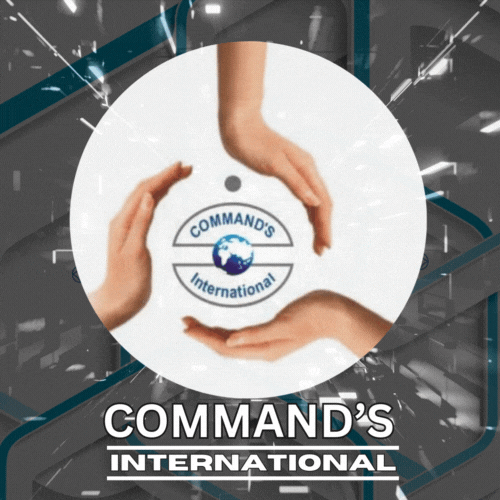In financial accounting, the type of organization significantly influences the way financial transactions are recorded, reported, and analyzed. Businesses are broadly classified into three primary types: Service Organizations, Trading Organizations, and Manufacturing Organizations. Each type has its own set of accounting requirements, which must be understood to ensure accurate financial reporting.
Let’s dive into the Primary Types of Organizations and explore each with examples to help you understand the accounting practices specific to these categories.
1. Service Organizations
Service organizations provide intangible products or services to their clients rather than physical goods. These organizations typically have low operational costs in terms of inventory but may have higher costs related to labor and expertise.
Examples of Service Organizations:
- Consulting Firms: Firms offering strategic advice or specialized knowledge, such as McKinsey or Boston Consulting Group.
- Hospitals: Healthcare organizations that offer medical services, such as Apollo Hospitals.
- Education Providers: Schools, colleges, and training centers that provide education services, like Dhruva School or online learning platforms.
- IT Companies: Firms providing software development, system maintenance, or tech support, such as Infosys or TCS.
Key Features:
- Revenue is generated through service fees or consultation charges.
- There is minimal involvement in inventory management since services are intangible.
- Expenses are mostly related to labor, overheads, and operational costs like utilities or software.
Accounting Focus:
- Service organizations focus on tracking service revenue, which is often based on hourly rates, project costs, or retainer fees.
- Managing accounts receivable becomes essential as clients pay for services rendered.
- Expense management is crucial, especially for salaries, operational expenses, and taxes.
Example:
A consulting firm charges $200 per hour for strategic business advice. If a client uses 20 hours of consulting, the service revenue would be $4,000. The accounting would involve recording this revenue and accounting for the consulting team’s salaries, office expenses, and any other operational costs.
2. Trading Organizations
Trading organizations are primarily engaged in buying goods from suppliers and selling them to customers. These businesses do not alter the goods but earn a profit by selling at a markup price. Trading organizations can range from small retail businesses to large wholesale distributors.
Examples of Trading Organizations:
- Retail Stores: Shops or online platforms that sell goods directly to consumers, such as Amazon or Walmart.
- Wholesalers: Businesses like Metro Cash & Carry that sell goods in bulk to other businesses or retailers.
- E-commerce Companies: Platforms that facilitate online sales of products, such as Flipkart or eBay.
Key Features:
- The focus is on inventory management, as goods are purchased and sold without modification.
- Revenue is generated from selling products at a price higher than the cost of purchase.
- Expenses mainly involve cost of goods sold (COGS), which includes the cost of purchasing products, storing them, and handling logistics.
Accounting Focus:
- The key task for trading organizations is to calculate Cost of Goods Sold (COGS) accurately. This includes the cost of inventory purchased, inventory sold, and maintaining stock records.
- Financial statements must reflect gross profit, which is derived from the difference between sales revenue and COGS.
- Inventory valuation is critical for determining the ending stock value and ensuring correct financial reporting.
Example:
A retail store purchases 100 mobile phones at $150 each and sells them at $200. The COGS for selling one mobile phone would be $150. If 50 phones are sold, the total COGS will be $7,500, and the gross profit (revenue minus COGS) would be $2,500.
3. Manufacturing Organizations
Manufacturing organizations are involved in the process of producing goods by converting raw materials into finished products. These organizations deal with complex operations, including managing raw materials, production processes, and finished goods.
Examples of Manufacturing Organizations:
- Automobile Manufacturers: Companies like Tata Motors, Ford, or Toyota that produce vehicles.
- Electronics Manufacturers: Firms such as Samsung, LG, or Apple that design and manufacture electronic devices.
- Textile Companies: Firms producing fabric and clothing, such as Raymond or Zara.
Key Features:
- These organizations are involved in multiple production stages: raw materials, work-in-progress (WIP), and finished goods.
- Manufacturing requires detailed tracking of production costs, including direct materials, direct labor, and overheads (indirect costs like rent, utilities, etc.).
- They often have more complex financial reporting due to the need to manage inventory at various stages of production.
Accounting Focus:
- Cost accounting becomes essential for calculating the total cost of production, including all direct and indirect costs.
- The organization needs to track raw materials inventory, work-in-progress (WIP) inventory, and finished goods inventory.
- Financial statements need to reflect all costs accurately to determine net profit after accounting for manufacturing costs.
Example:
A car manufacturer buys steel, tires, and other parts as raw materials to assemble vehicles. The cost of raw materials is $10,000, direct labor costs amount to $5,000, and overheads are $2,000. If 50 cars are produced, the total production cost per car will be $340, and the manufacturer needs to calculate revenue based on the price of the car and the profit margin.
Conclusion: Why Understanding These Types is Important
Each type of organization has unique accounting needs that require specialized knowledge. For businesses to thrive, accurate financial reporting is crucial for decision-making, resource allocation, and compliance with tax laws. By understanding the primary types of organizations, you can tailor accounting practices to fit the specific operational structure and financial activities of the business.
At Commands Global, we offer comprehensive courses in Tally Financial Accounting to help you gain the skills needed to manage financial records across different types of organizations. Whether you’re interested in service-based businesses, trading companies, or manufacturing giants, our courses provide hands-on training to give you real-world financial accounting expertise.
📘 Get Started Today!
Visit www.commandsglobal.com to explore our range of accounting courses and take your accounting skills to the next level!

